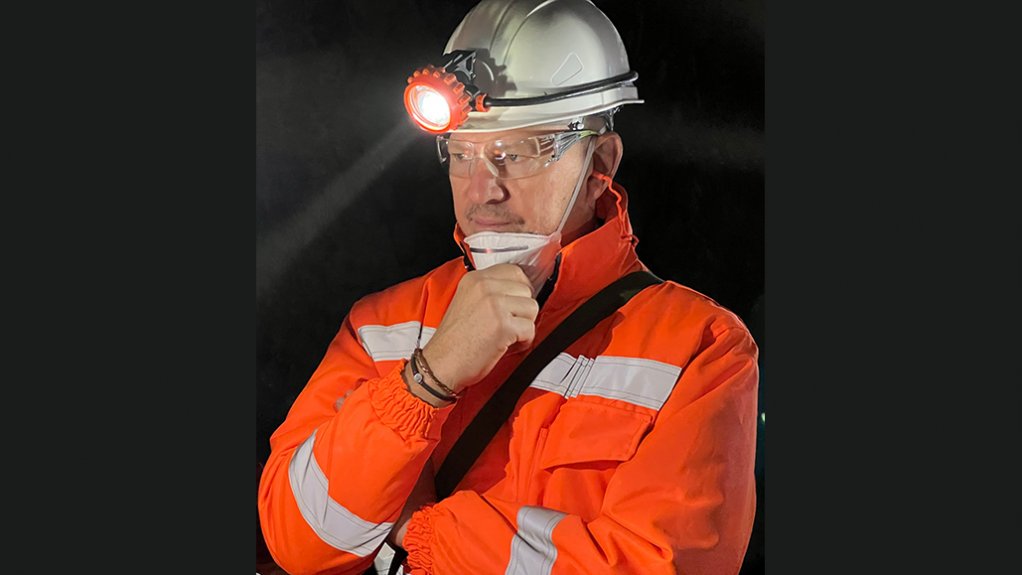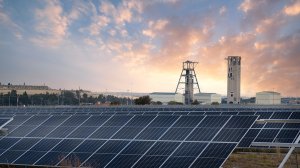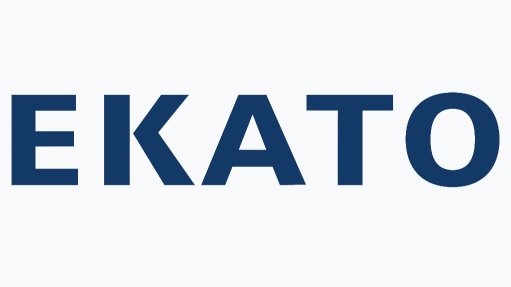More renewable energy on cards at South Deep – Gold Fields



More renewables on cards at South Deep gold mine, where 50 MW of solar is making major contribution.
Gold Fields CEO Mike Fraser.
JOHANNESBURG (miningweekly.com) – The provision of more renewable energy at the South Deep gold mine 50 km south-west of Johannesburg is under intense scrutiny by Gold Fields, which describes the mine’s two-year-old 50 MW solar plant as a major plus.
“One of the biggest economic advantages for us in our portfolio is further renewable energy at South Deep and so we've been studying that very heavily,” Gold Fields CEO Mike Fraser said in response to Mining Weekly during a media roundtable.
Globally, Gold Fields has been deploying renewable energy across all its mine sites, with one of the big priorities being the establishment of a microgrid at the long-life St Ives gold mine in Western Australia, where its Granny Smith mine is expanding its solar farm and where the Gruyere joint venture (JV) and Agnew are renewables users. Moreover, in Peru, the group’s Cerro Corona is 100% hydro-powered.
Meanwhile, South Deep’s 50 MW Khanyisa solar plant – meaning Light Up in Setswana – has been “a great contributor”, Fraser said, providing around 23% of the energy needs of South Deep, a long-life mechanised operation.
Now, the prospect of more solar energy capacity is a frontrunner, while the generation of wind energy is at an advanced stage of investigation.
“The extension of solar may be even more beneficial in the near term than wind. We'll continue to do those trade-offs. But the one thing we do know is that more renewable energy at South Deep is definitely on the cards, and we’ll deliver on that,” Fraser outlined.
South Deep currently consumes around 494 GWh of electricity a year, which represents 10% of the mine’s annual costs and 93% of its carbon emissions.
GOLD PRICE
In response to Mining Weekly’s question on the likelihood of the gold price having rebased at a higher level, Fraser described the gold industry as being “in a really great place right now”.
“We don't plan for those higher prices, we plan conservatively, but as long as the gold prices hold, clearly, that's really good for the gold mines.”
On what is driving the gold price, he said: “Firstly, there’s a lot of central bank buying, particularly out of Asia. I think part of that is the long-term geopolitical unwinding and tension, particularly between the superpowers, and a moving away from the reliance on the US dollar as the global functional currency.
“Secondly, if you think one of the other major contributors to demand is also jewellery buying, particularly out of India.
“What we've seen driving India demand is there's been a reduction in duties payable, which is providing some support, but also what you've got is massive latent demand as increasing wealth emerges in India, and you should see continued strong demand on that.”
A third driver is demand for micro exchange-traded funds in China and a fourth element is the foreseen lowering of interest rates, which puts the cost of holding gold in a more attractive light.
“So, there are a lot of positive attributes that we should see supporting gold and certainly a lot of people are saying that the risk is more to the upside than the downside.
“Seeing a major reset to, say, below $2 000 oz is probably less likely than additional upside, which we think, over the coming years, will certainly be good for gold producers.
“If you look at Gold Fields' profile going forward, I think we’re well placed to take advantage,” Fraser added, amid the company planning second-half gold production for around 1.2-million ounces, up on the first-half’s 918 000 oz.
Meanwhile, because of the slower end-September restart at Salares Norte in Chile, and the slower recovery at South Deep, output has been guided down by 150 000 oz.
Encouragingly, South Deep’s redesigned mining methodologies are setting the mine up for success, amid backfill leakage slowing stope turnaround and stope development.
“We've opted for taking a conservative approach in getting this right. There are products that have been tested that will help us solve the leakage challenge, and once through that, we'll be in a much better position.”
What is seen as being positive about South Deep are its strong primary productivity metrics.
“They’re moving forward in a really good way, and if we can solve the backfill rehandling and leakage issue, then we’re going to be set up much better to advance the ramp-up and that’s what we’re trying to solve for in the next six months.”
Regarding the Ghanaian government's approval of the Tarkwa/Iduapriem merger, he said: ”The reason that we haven't put a whole lot of detail into the feedback is because there's an in-country political process that's underway, and so what we don't want to do is say anything that will undermine that process.
“But what I can say is that we still have very strong support from the government on getting this through. We’ve got alignment on the terms and we’ve also been going through the steps of getting the Ghanaian revenue authority aligned. The step beyond that is to get formal Cabinet approval,” and the prospect of a new government coming into power next year is not seen as a JV derailer. “It may delay it, but we're working hard with the government to try and get it through this year,” Fraser explained.
CHINCHILLA
On Salares Norte ramp-up now being expected at the end of September rather than from September 1, he said: “The ramp-up will now extend into the second quarter of 2025. We deliberately haven't put out any guidance for 2025 at this stage, because we want to confidently get into ramp-up in the fourth quarter, and then we'll come out with the guidance number into 2025. But all things going well, we'll be into normalised production levels into the second half of 2025.”
Regarding the impact of the chinchilla relocation programme on the Salares Norte ramp-up, Fraser pointed out that the programme was designed by the pre-eminent fauna agency in Chile and the reason that the chinchilla issue arose was because of Gold Fields’ initial environmental impact assessment study that identified their potential on-site presence.
“The entire programme was designed in partnership with these experts who've been working with us to actually go through the monitoring, capture and relocation programme, and throughout the time, we've been talking to the environmental agency on this.”
Chinchillas are native to the Andes mountains in South America.
“The one thing that we mustn't lose sight of is that Gold Fields was on the front foot in identifying this potential risk before we built the mine. To date, we’ve had some views of the presence of chinchilla and the design of the programme is to give ourselves absolute assurance before we dismantle any of these rocky areas that there aren't any chinchillas in our location.
“But given some of the noise that's been around this, we’ve been engaging in the last couple of months with the environmental agency to make sure that we are fully aligned and not going to create any harm."
When do you expect to release 2025 guidance?
We typically would only put out guidance when we go out with our full-year results in the first quarter of 2025, which is generally around February or so. But we’re clear that there is probably a need for an update, particularly in relation to Salares Norte, and possibly on South Deep, which we'll put in around November, with our third-quarter results. We believe the second half is going to be much stronger. We also believe that we're going to be set up for a much stronger 2025 and there's an exciting future for this company. Whilst this might have been seen as a poorer six months, we believe that we’ve got much better days ahead of us.
Article Enquiry
Email Article
Save Article
Feedback
To advertise email advertising@creamermedia.co.za or click here
Press Office
Announcements
What's On
Subscribe to improve your user experience...
Option 1 (equivalent of R125 a month):
Receive a weekly copy of Creamer Media's Engineering News & Mining Weekly magazine
(print copy for those in South Africa and e-magazine for those outside of South Africa)
Receive daily email newsletters
Access to full search results
Access archive of magazine back copies
Access to Projects in Progress
Access to ONE Research Report of your choice in PDF format
Option 2 (equivalent of R375 a month):
All benefits from Option 1
PLUS
Access to Creamer Media's Research Channel Africa for ALL Research Reports, in PDF format, on various industrial and mining sectors
including Electricity; Water; Energy Transition; Hydrogen; Roads, Rail and Ports; Coal; Gold; Platinum; Battery Metals; etc.
Already a subscriber?
Forgotten your password?
Receive weekly copy of Creamer Media's Engineering News & Mining Weekly magazine (print copy for those in South Africa and e-magazine for those outside of South Africa)
➕
Recieve daily email newsletters
➕
Access to full search results
➕
Access archive of magazine back copies
➕
Access to Projects in Progress
➕
Access to ONE Research Report of your choice in PDF format
RESEARCH CHANNEL AFRICA
R4500 (equivalent of R375 a month)
SUBSCRIBEAll benefits from Option 1
➕
Access to Creamer Media's Research Channel Africa for ALL Research Reports on various industrial and mining sectors, in PDF format, including on:
Electricity
➕
Water
➕
Energy Transition
➕
Hydrogen
➕
Roads, Rail and Ports
➕
Coal
➕
Gold
➕
Platinum
➕
Battery Metals
➕
etc.
Receive all benefits from Option 1 or Option 2 delivered to numerous people at your company
➕
Multiple User names and Passwords for simultaneous log-ins
➕
Intranet integration access to all in your organisation
















